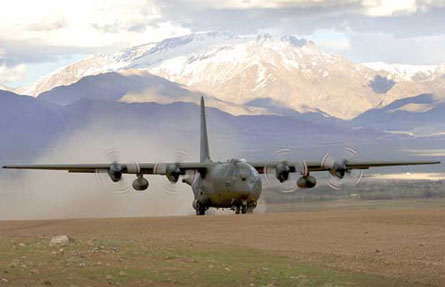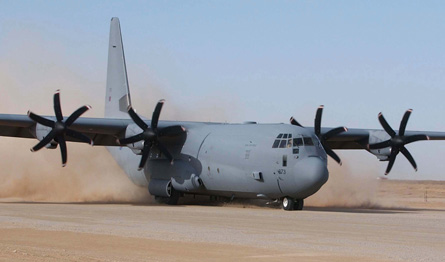The UK Royal Air Force will face a potentially serious shortfall in its ability to maintain high-tempo tactical airlift activities from early next decade, according to a new report that warns of a gap between the retirement of its last Lockheed Martin C-130Ks and full availability of the Airbus Military A400M by 2018.
In a report published on 27 June, the UK National Audit Office says: "There are significant risks for the department [Ministry of Defence], because demand for tactical fixed-wing airlift is likely to remain high in the near future. Airlift capacity will be compromised after the C-130Ks retire in 2012, and a decision must be taken soon to reduce the impact of long lead times for some solutions."
 |
|---|
© Crown Copyright |
The NAO says the RAF's C-130Ks (pictured above) and new-generation C-130Js are delivering high availability rates of 94% and 85% respectively against planned missions while deployed on operations. "The MoD is doing a good job at the moment in supporting troops in Afghanistan and Iraq," says Tim Banfield, the report's senior author. "But it is unlikely to be able to sustain the current tactical capability."
The UK has 43 Hercules, including 24 J- and 19 K-model aircraft. However, the latter fleet will decline to nine aircraft in 2010, and cease operations in 2012 just months after the RAF's first seven of 25 A400M's are scheduled to achieve in-service status in December 2011, two years later than originally planned. Studies are under way to assess whether some of the legacy airframes could continue to fly until 2014, one year before the UK's last A400M will be delivered.
A dramatic change in the nature of RAF C-130 operations over the last five years is also having a damaging effect on the current fleet and increasing maintenance demands. Average sortie times have halved to 90min, with the number of take-offs and landings performed having doubled, including on the frequent use of unpaved strips (C-130J pictured below).
 |
|---|
© Crown Copyright |
The aircraft also now perform resupply missions previously conducted using transport helicopters, and airdrop tasks rose to 123t a month in 2007 from 21t the previous year, adding fresh strain to airframes.
The NAO says that as a result, the MoD "will also need to address shortened wing life on the newer C-130J". A joint study with the Royal Australian Air Force into the issue of centre wing fatigue will report in 2013, but the NAO says UK replacement work could be required as soon as 2012, restricting airframe availability.
This will be exacerbated by the need to perform Block 7.0 software upgrades in 2011 and Project Hermes modifications from 2012 to prepare the aircraft to assume the C-130K's current special forces support role.
The effects of deployed operations are also having an adverse effect on Hercules use in the UK, with availability rates falling to between 72% and 75%, and the number of planned training sorties cancelled having increased tenfold since 2005-6. Pilots also typically log just 13 flight hours a month in the UK, versus a deployed figure of between 40h and 80h.
NAO recommendations include investigating the possible purchase, lease or charter of interim airlift capability, upgrading simulators and addressing spare parts shortages for the C-130J, and filling more than 100 engineering vacancies at RAF Lyneham in Wiltshire. These and other efficiency improvements could lead to aircraft being available for an extra 800 days a year, it estimates.
The MoD says it will study the report's recommendations, but adds: "The planned in-service date for the A400M is still within the required timeframe to manage a smooth replacement of the Hercules."
Current annual costs for the C-130 fleet are almost £340 million ($675 million), including basing, fuel and upgrades.
Source: Flight International
















